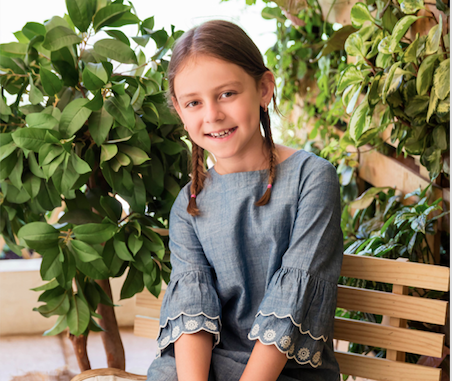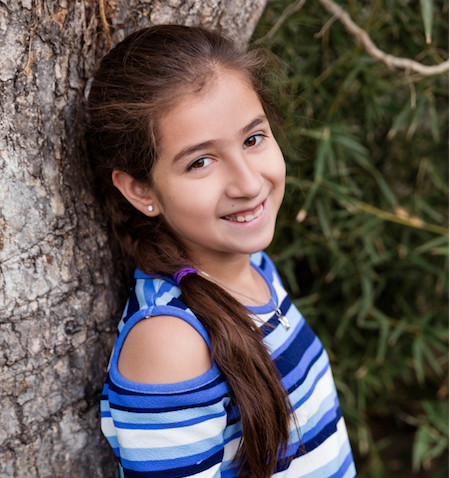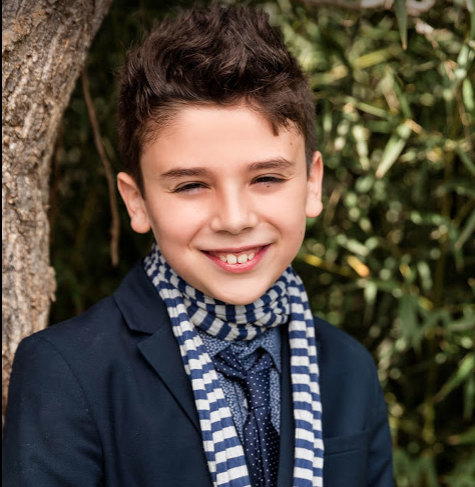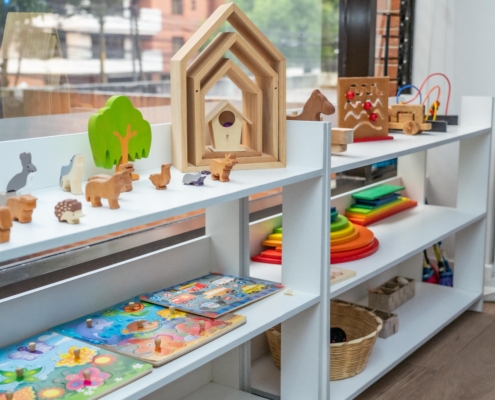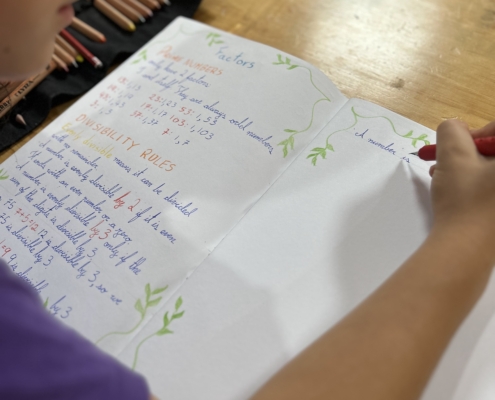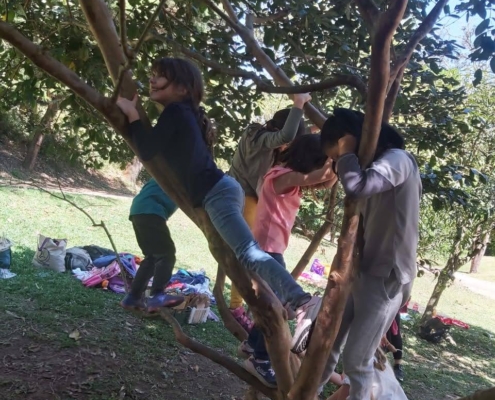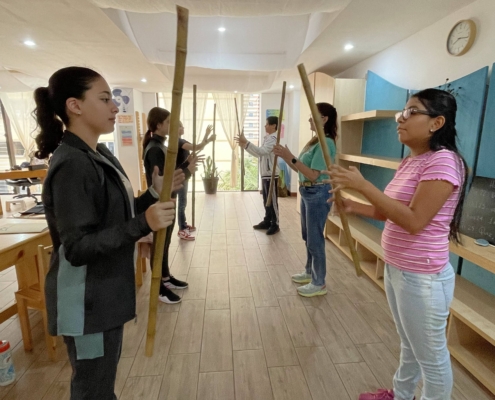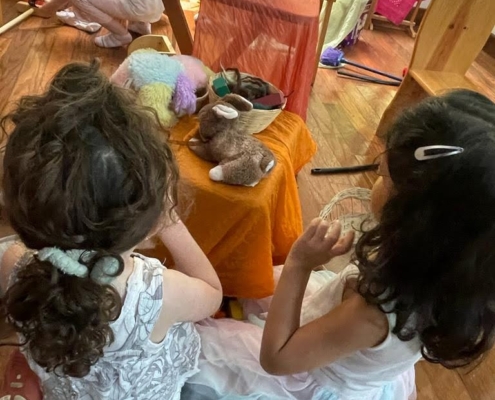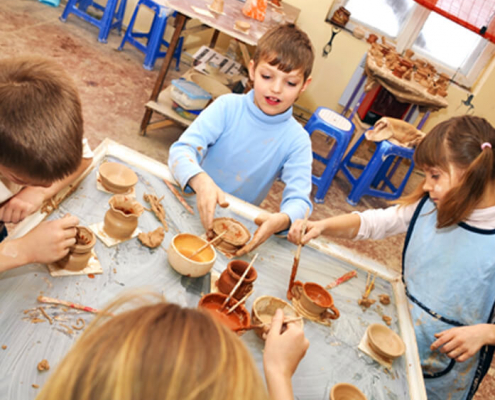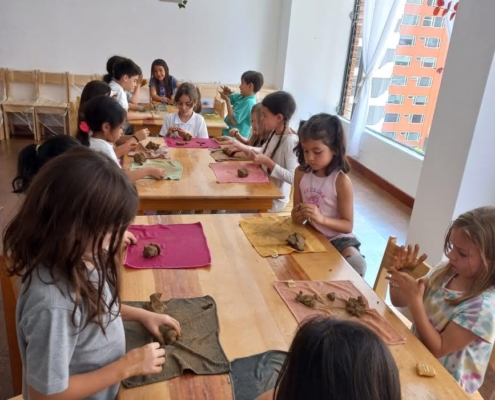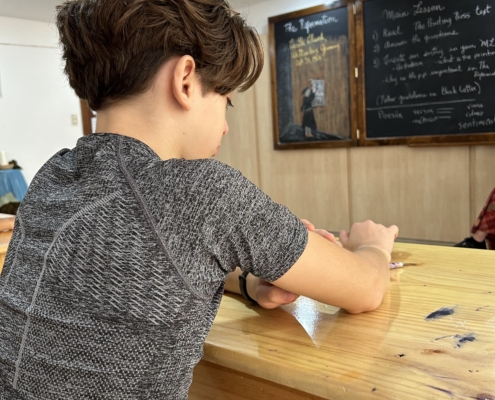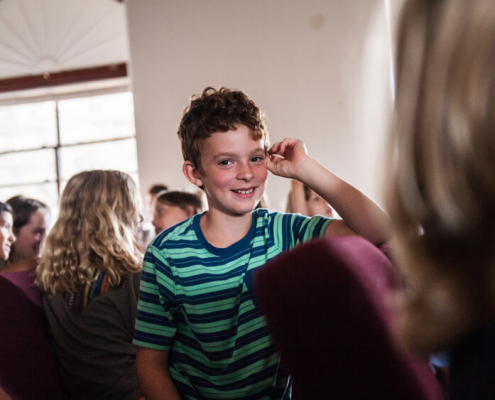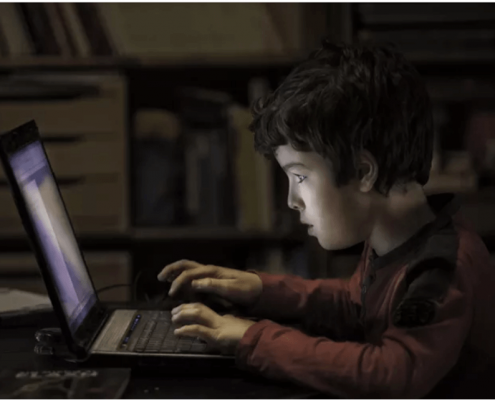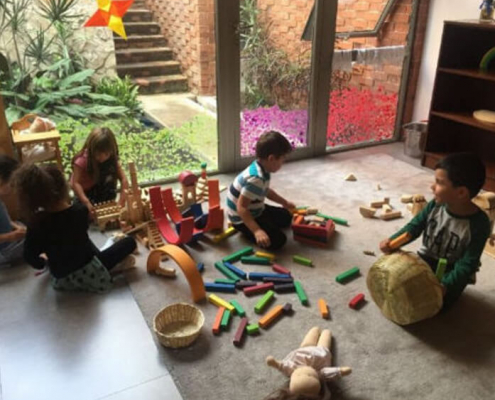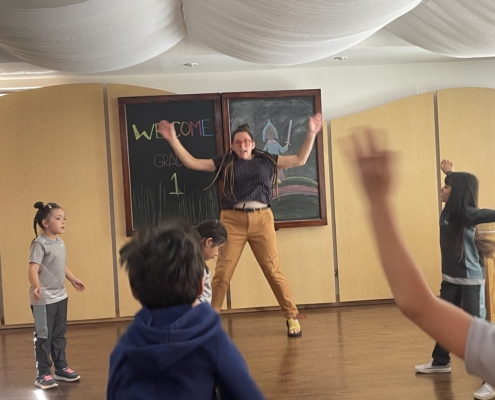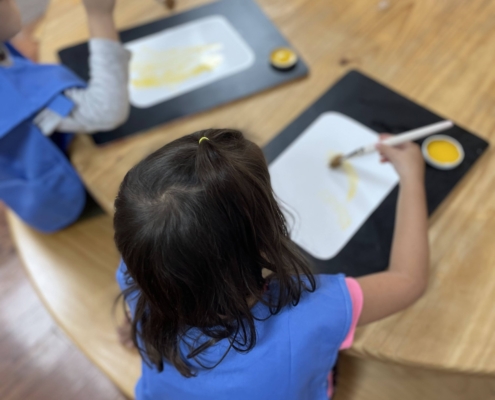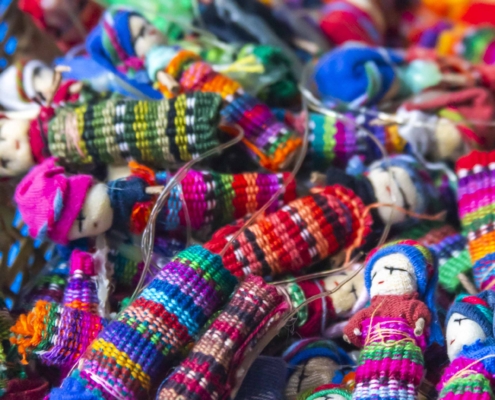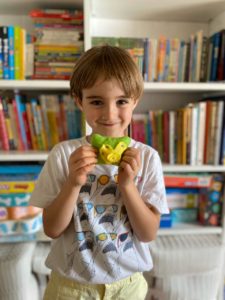We know the importance of having a daily rhythm, especially in this circumstance that we need to stay at home. Today is the day you will get your daily rhythm created and mapped out! We are going to help you. We are sharing with you this article where you will find great ideas and tips on how to create your daily rhythm.
Excerpt from Save your Homeschooling Day document written by Jean from Waldorf Homeschool Simplify.
Waldorf –Inspired Learning.
In this guide, I’ll walk you through 2 simple steps to help you. Plus, I’ll share some great visuals with you for creating your own rhythm chart! The answer is to start with the basics of rhythm and build from there. And in this guide, I’m going to show you how that’s done so you can start small and grow as you go.
“Have fun with rhythm because rhythm is your friend”, Jean
What is Rhythm? Rhythm is simply your daily routine of what you do first, and then next, and then next. I’m going to help you discover your own rhythm to provide a structure for your days so that your children can feel secure in knowing what to expect. This actually makes daily life with children easier for everyone – you and your children!
With a sense of rhythm, you can move throughout your day with alternating activities of inward focus and outward focus, much like the rhythm of breathing, inhaling, and exhaling. So a pattern is established. And then repeated.
Rhythm is more about sequencing and grouping activities than it is about a schedule with time slots.
Why Daily Rhythm?
It is important to build patterns and routines, before planning, customizing, and implementing the activities.
Rhythm is natural, Do you struggle with rhythm? Or have a resistance to it? Here is a great place to begin – with an image of how the naturally occurring rhythms within us connect with the naturally occurring rhythms all around us.
Picture a warm, glowing heart in your mind. It represents love but it also represents the rhythm of your heartbeat.
Rhythm is “a strong, regular, repeated pattern of movement or sound.” A steady rhythm can be a steady beat, a recurring sound, or a repetitive activity. We can think of not only our heartbeat but also our breath, in and out. These are the natural rhythms that live inside our bodies. We can also observe external rhythms. There is the rhythm of day and night, the rhythm of the days of the week, the rhythm of the months, and the rhythm of the seasons.
All of these rhythms are part of our lives. Their repetition brings us comfort because they are regular and expected. Rhythm provides an anchor and especially helps children, who have little control over their environments, to feel secure.
Steiner even said, “Rhythm can take the place of strength and will.” Rhythm is the reason why Rudolf Steiner suggested warming up at the start of our lessons with verse recitation, speech exercises, or singing. He even began each of his lectures to the very first Waldorf teachers-in-training with speech exercises and verse recitation to help regulate everyone’s breathing, their natural in-breath and out-breath their internal, natural rhythm. He reasoned that this practice teaches us flexibility and helps to ground us in the present moment. That’s what a strong rhythm can do.
AS YOU EXPLORE RHYTHM…
A word to the wise as you develop your own rhythm: Be yourself. Be authentic. Waldorf Rhythm is not about doing what you’re supposed to do, doing what I suggest you do, doing what other mamas are doing on Instagram…
This process of laying the foundation for your daily and weekly rhythm is about you and your family. Stay connected to your own unique life and do what is best for you, and no one else. Courage comes from being willing to be who you are! Don’t wait until you’re confident to show up. You have everything you need right now and can show up just as you are. Now let’s dive in!
2 Steps to Create Your Daily Rhythm
Step One: Design a Daily Rhythm that Works for You
Now it’s time to create your daily rhythm! Start by thinking of the rhythm of the week, where each weekday has a different flavor and often different activities. Like pizza on Saturday nights, or errands and grocery shopping on Thursday afternoons after lunch. These are activities that we do regularly and repeatedly. They are not necessarily assigned a particular time, but more of a general time slot or relationship to another activity. While some activities might vary from day to day, there are other activities that you repeat daily.
Think about what you do each and every day. Start by making a list of your daily activities from the time you wake up until you go to sleep at night. Include chores, mealtimes, rest times, and bedtime – plus lessons and activities.
Be gentle with yourself and breathe into your daily rhythm. No need to include the exact time unless you want to. Just start with Wake Up and end with Bedtime. Add in Meal Times, Lesson Time, and Rest Time, and you have your basic structure. These provide anchor points or pillars in your day that form the basis of your rhythm. On the next page are a few time chunks in your day to reflect on as you craft your daily rhythm.
YOU TIME
What do you need to do before your children get up and ready for the day? Even just 15 minutes to yourself to listen to a meditation, recite a verse by heart, light a candle, or sit quietly can nourish you before the day begins.
MORNINGS
Make a list of what you and your children will do together. On this list, you can include breakfast, chore time, circle time, lesson time, and outdoor time…you can even include the specific steps of lesson time if you have children in the grades.
MEAL TIME
Regular mealtimes help to provide anchor points in your day. And when you sing or recite a blessing before eating, you’re adding a ritual that can make this daily activity even more special.
REST TIME
Keep rest or nap time going as long as possible as your children grow older! Even pre-teens can benefit from quiet alone time each day. And so can we! In my family, this was a good time to encourage my boys to separate for a while each afternoon.
TIME IN NATURE
Time in nature helps to ground us in beauty while giving us and our children extra space. Try making time for unstructured play outdoors each day after breakfast or lunch.
AFTERNOONS
Don’t forget about the afternoons. Aside from daily quiet time or time to play outside, consider doing handwork, reading aloud, painting, cooking, or baking in the afternoons. This can also be a good time for errands or other outside-of-the-house activities.
EVENINGS
Evenings are a great time to consider a family activity such as reading aloud, a game, or making music together that can include everyone. Here is an example of a simple daily rhythm:
Wake Up Morning Chores Breakfast Morning Activity or Main Lesson Lunch Play Outside Read Chapter Book Rest Prepare Dinner & Eat Playtime Get Ready for Bed. The Waldorf approach is really very simple.
Not always easy (especially in today’s world where so much swirling all around us is a-rhythmic, meaning you can access just about anything any time of day or season you want)…but simple. And we can give ourselves permission to let it be easy!
I invite you to embrace the simplicity. And to allow yourself to experiment and get comfortable not knowing everything before you begin. So truthfully, gosh darn it, rhythm is always the answer when things go awry or seem utterly chaotic. The beauty of rhythm is that it’s comforting. It helps us all know what to expect and frees up our brain space and our will so we can do good work. Make rhythm your friend!
Step Two: Create a Visual Reminder
And finally, I encourage you to make some kind of visual chart of this daily rhythm. No need to get too elaborate, but it really helps to create something clear and colorful to hang up for everyone in the family to see. You could create a chart to hang on the wall. Or you might simply write your daily rhythm on a chalkboard. Or write your activities on cards that can be moved around.
This visual reminder will help you remember your plan and stay committed to it. It’s also nice to have a basic rhythm to go back to when things get off track instead of inventing one as you go! Now for some examples. I want to show you a few different ways some of the parents in the Waldorf community have created a visual for themselves.
On the next page is an example of starting with the activities written on cards. You could hang these on a long ribbon, or add magnets to the backs of the cards and arrange them daily or weekly.
Here’s what this mom said about her rhythm chart: “I have the rhythm that I created with your Plan It Out course inside my kitchen cabinet. I don’t follow it every day. But it is WONDERFUL to have right there on days that I am tired or confused. The answer to what to do next is ALWAYS waiting for me. It is such a comfort.”
Here are some other great examples of rhythm charts to inspire you to create your own!
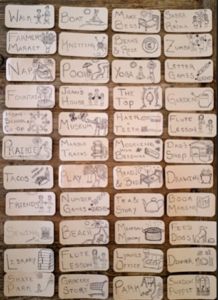
And one more from a parent of three children.
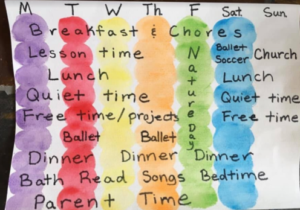
Another example.
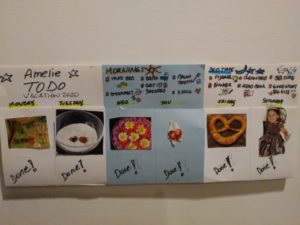
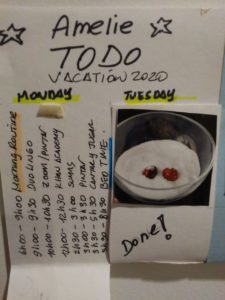
See how different each of these rhythm charts is?
You really can experiment with rhythm and make it your own.
Now it’s your turn to use your imagination and create a daily rhythm chart that’s just right for you and your family.
LET RHYTHM BE A COMFORT!
Sometimes we get stuck on how to keep the rhythm going. Either life gets busier or something comes up to throw our rhythm off. Or we might even get bored with it!
Don’t stress. Let go of some things. Be mindful. Choose intentionally.
Establish a family rhythm and revisit it from time to time to tweak and adjust as needed. Be kind to yourself.
It’s important to know what to do when you start to feel like your rhythm needs tweaking or even a complete overhaul. It’s OK to change your daily rhythm as a new season arrives or your circumstances change. And it’s also OK to mix it up some days.
The daily rhythm you create is not meant to hem you in, but to offer you a sense of freedom – knowing what comes next but also knowing that there’s flexibility.
When your rhythm goes off the rails (and it will from time to time), how do you get back on track?
Scale back until your rhythm is working again, and build from there.
Start with three anchor points: morning chores, mealtimes, and bedtime. When these feel solid, add more activities and lessons back in.
Less is more, I promise!
Remember… make rhythm your friend so you can relax and enjoy.
